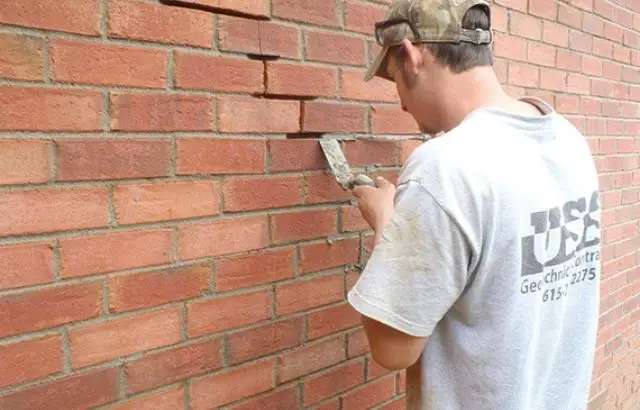There are various aspects to consider when building a home. The foundations, the least load-bearing element of the house, on which the floors and walls rest, determine a home’s quality, irrespective of architectural style. While the raised slab and the slab on grade are widely used, each is better suited to specific situations and conditions. Let’s learn raised slab Vs slab on grade.
Raised Floor Foundation vs. Slab-On-Grade

In light-frame construction, two types of foundations are commonly used. One type is often referred to as a raised floor, which is continuous support that spans the entire perimeter with columns in the middle. Another type is a grade on the slab; this type of foundation is a solid concrete slab that serves as the base for the building, which is poured around the perimeter thicker to form the foundation.
Some constructions use both foundations, such as a raised foundation house with an attached garage. The main foundation should be chosen according to the site’s specific needs, but it can also be determined according to the investment variables.
A raised floor foundation has many advantages and is suitable for most projects. If a construction site has problem soil such as expansive clay, a raised foundation will perform much better than a grade slab as the slab is more likely to crack in this type of soil.
What are the uses?
The raised floor is also used to raise the building above the floodplain. The most practical reason a raised foundation is good is that it leaves free space under the building, making maintenance, repair, and renovation easier.
The increased cost and probable threat of termites from unprotected wood near the ground are two risks of adopting a raised foundation.
A slab on grade also has many advantages, but only in certain design applications. Slab grades are easier to build when the slope of the construction site is very low, which means little or no slope. This can help protect your home from termites because there is no exposed timber graded on slab foundations. Grade on slab also has disadvantages in that it is very difficult to reshape and very expensive to repair if it cracks.
Each construction site is unique, and the base foundation should be selected according to the construction site. However, a raised foundation seems to be the best option for a long-term investment.
Tabular Differences between Slab on Grade and Raised Slab
| Slab on grade | Raised slab |
| Reinforcement may or may not be provided | Reinforcement must be provided |
| Doesn’t require footings to support | Raised Slab is supported with concrete blocks |
| It doesn’t require scaffolding to construct | Requires proper scaffolding |
| It rests directly on the ground below it. | It elevates the home above the ground, preventing rainfall infiltration and giving it a more appealing aspect. |
| The thickness of the slab is increased at the edges of slab. (perimeter) | The raised slab has a uniform thickness |
| Expansion joints are provided at the edges of the slab. | Expansion joints are not required |
| Slab on the grade used in areas where the ground does not freeze | Raised slab foundations are good for coastal areas |
| slab-on-grade foundations are affected by moisture and weather conditions | They are moisture-resistant and resistant to extreme weather conditions. |
| It is susceptible to flooding. | It reduces the risk of flooding |
Slab on Grade

Grade slabs or slabs on grade are slabs set directly on the ground to support walls and other structural features.
This sort of slab is poured directly on the ground. The grade slab acts as a foundation for a structure that does not require extra support. In areas where the ground does not freeze, slabs are graded. Reinforcement may or may not be included in this sort of slab. Ground loads and local building codes are used to determine whether or not reinforcement should be installed. The thickness of a grade slab should be at least 4 inches.
Grade slabs are divided into two categories.
- Slab on Grade with Support
- Slab on Grade, with Monolithic
Supported Slab on Grade
A supported slab or foundation slab is selected when traditional supports are already in place to lift the columns. It supports the wall, and the floor slab is supported by a layer of gravel and a moisture barrier. The base/plinth beam molds also act as adhesive plates for the slab mold. An expansion joint is supplied between the concrete slab and the wall to relieve tension at hot temperatures.
Slab on Grade, with Monolithic
The slab of the monolithic level has no supports. The concrete slab itself acts as a support for the building, and the walls are raised from the floor slab. This type of board is framed by placing the glued boards around the board according to the plan and pouring concrete inside the glued boards.
Gravel layers and a moisture barrier usually support the paving slabs. Adding these layers helps prevent water from entering the slab and cracking the surface.
The perimeter of the Grade slab is thicker than the rest of the surface; this thicker part acts as a mini base and helps distribute the top loads more evenly over the surrounding soil.
Advantages of Slab on Grade
The building above ground has the advantage of delivering more natural light than a basement. It also helps keep indoor air clean by lowering the chance of mold.
Furthermore, slab-on-grade construction might enhance your living space’s comfort. Thermal mass can absorb and retain heat in a conditioned living environment, which aids in temperature regulation. Homes with a lot of thermal mass inside the building envelope are also easier to keep cool in the summer.
Affordability
Bringing a construction project to the point where it is ready for main floor framing is significantly less expensive with a slab-on-grade than a basement. With a slab, you may achieve the same goal without having to construct an 8-foot concrete wall or a hardwood subfloor on top.
Convenience and Efficacy
Slab-on-grade takes additional precautions to prevent frost heave. Therefore it integrates layers of insulation that would normally be excluded from basement construction.
Slab floors are especially well-suited to radiant floor heating, creating a balanced and comfortable climate by converting the concrete mass into a single large radiator.
Taking steps to lessen your environmental impact:
The slab-on-grade building approach decreases your environmental impact in two ways: it reduces the amount of CO2 created in the manufacturing and transportation of materials, and it provides a wall with far greater insulation.
You may choose to replace foundation walls with above-ground walls when you create a slab-on-grade home.
Frequently Asked Questions
What is the difference between a slab and a slab on the ground?
A slab on the ground is a concrete slab laid in shape that rests on the ground. The main difference between these two types of foundation slabs lies in how the concrete is poured.
Is it a good idea to build on a raised slab foundation?
Suppose you are not planning any future renovations and would prefer to avoid the moisture and allergy issues connected with bypass spaces. In that case, a raised slab foundation is an excellent choice. If you want to save money on construction and avoid moisture concerns, a raised slab is the way to go.
Which is better: a slab or a raised foundation?
If a construction site has problem soil such as expansive clay, a raised foundation will perform much better than a slab as the slab is more likely to crack in this type of soil. Slab foundations are easier to build when the site’s slope is very low, which means little or no slope.
What is the grade slab used for?
This grade on slab serves as the foundation of a house or building and provides a solid foundation for walls and other building elements. In many areas, reinforcement with rebar or wire mesh is required under a flat slab. Before building a grade slab, contractors often dig in the surrounding area.
How thick should the slab be at ground level?
The thickness of this i6 “slab ranged from 2” to 8 “, but the” normal “range would be 4 ½” to 7 1/2 “with an” average “concrete thickness of 5 to 5 ½”.
Conclusion
There are various aspects to consider while deciding between grade on slab and raised foundations. The area in which you live is one of the most crucial factors. If you live in an earthquake-prone area, for example, a raised foundation will provide extra protection.




